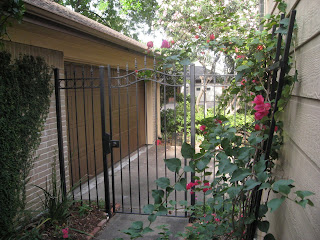Here's the link to the rental house across from Medicine Rock
http://siletzrental.com/index.html
and some videos from our first visit...
A Pile of Peerys
Sunday, June 12, 2011
Saturday, May 14, 2011
12 Hours in Amsterdam
Brie and I had a whirlwind 12-hr layover in Amsterdam last September, en route to Cairo. It wasn't as whirlwind as 12 hours in Amsterdam has the potential to be, but we liked our brief visit. We should mention that when we landed we had been awake for 24 hours and were so very tired! We pushed through - Amsterdam is a place you can keep moving and there's always something completely nutso to see, so that kept it lively! Hope you enjoy - it's the first time I made one of these videos...
The picture quality on this video really sucks. So bad that you can't even see the reason for some of the photos. 100MB size limit on Blogger for videos and the original one in Hi-Def (super-awesome) is 300MB. I am so sad. Oh well, just imagine the photos in sparkling clarity.
The picture quality on this video really sucks. So bad that you can't even see the reason for some of the photos. 100MB size limit on Blogger for videos and the original one in Hi-Def (super-awesome) is 300MB. I am so sad. Oh well, just imagine the photos in sparkling clarity.
Tuesday, May 3, 2011
The Briar Branch Makeover
Out with the old--a now outlawed double roof of cedar shingles (now considered too high a fire hazzard to own) topped with worn out asphalt shingles, and Hardy Plank siding with deep dark green paint, that absorbs 90% of the sun rays' heat--and in with the new: earthtones of brown and beige with the new roof supported with plywood that has a reflective aluminum sheet on the underside: the latest in energy savings in Houston construction. In no particular order, since I don't yet know how to bring them in that way:

Saturday, April 30, 2011
Friday, April 29, 2011
Maiden Voyage
Wednesday, March 30, 2011
Our Trip to Big Bend March 2011
How to describe the difference between my expectations of Big Bend and reality? I imagined some rolling, sandy hills in a vast desert, with no trees, and a meandering Rio Grande River wandering through it with sloped river banks leading to water that drug carriers and immigrants could wade across. And furthest from the truth, I thought being out in the middle of nowhere like that, it must have always been that way.
What I saw were shear cliffs, one-thousand, five-hundred feet high on the Mexican side of the river, that exposed, on their bottom portion, the sedimentary rock layers layed down by the twelve-hundred foot deep ocean that covered the area all the way to Canada one-hundred to ninety million years ago. The ocean disappeared then, then returned to flood the area five million years later forming lush savannahs and swamps. Forty-six million years ago, immense volcanic activity erupted that deposited up to four thousand feet of lava in the area, what the subsequent erosion left today exposed in the upper portion of those towering cliffs south of the river. Then continental uplifts twenty-five to fifteen million years ago shoved some of the sea level sedimentation five-thousand feet into the sky, forming the Chisos Mountain range, today a wild blend of exposed slanted sedimentary layers and erosion-exposed intrusions that had funneled all the extrusive lava through the sedimentary rocks to the surface during the volcanic age.
We stayed in the resort of the Chisos Mountain range, below the peak that stands six-thousand feet above the Rio Grande, an astonishing left-over from the end of the ice age in North America that still contains--in the highest elevations--Arizona pine, Douglas fir, Arizona cypress, quaking aspen and big-tooth maple trees, among the one-thousand-plus plants that live in the park. An oasis in a desert shortly after the ice receded, the mountains have a white-tailed deer that exists, in the world, only in the park, among the seventy-four mammals identified, including black bear and mountain lions. The Chisos oak and drooping juniper are here and no where else in the world, but the ranger who led one trek up a mountainside was more interested to tell us that the constant encroachment of the desert the past eight thousand years has caused the plants to react by cross-breeding for survival. Her example was the oak. She says they have identified one hundred types of oak that are related to, but not the same as the Chisos Oak. She showed us one that had the leaves of one type of oak and the bark of another. The deep greens of the deciduous and evergreen trees are striking.
The mystery for me remains the river, which we first saw running along in front of the shear cliff, but which, ten miles further south, ran into the Boquillas del Carmen Canyon, in which both sides of the canyon were fifteen-hundred feet high. Then on another day, further west, we followed the road upstream alongside the river across from the rock wall, until the river took a ninety degree turn south directly into the Santa Elena Canyon. The river today is a shadow of its former self, that image was correct, I could, and did, skip a rock across it, while people waded out into it to cool off. As we hiked into the Santa Elena Canyon, we met a couple who had floated the canyon fifteen years before and told us the water level then was thirty to forty feet higher in the canyon. I still don't know, especially watching the puny river run into Boquillas Canyon, how it could have cut through fifteen hundred feet of rock, especially given the cliff is only on one side of the river for miles, yet, the river both runs out of, and back into cliffs on both sides, telling me it had to be there before any erosion took place so it could dig down into the rock while running toward the sea. I didn't get to a ranger who could explain it to me.
Enough jabbering, Big Bend is worth the trip, from a macro view of the formations, a tiny portion of a couple hundred photos which we have attached, to give you a sense of differences. From a micro view, what looks like a desert around the Chisos, is not yet, since the Chisos get double the rainfall of the river valley, and drain it all into the park. A walk off the highway shows low plants of all kinds among the higher varieties of cactus more easily visible. We saw few animals as the entire park has not had rain since September fourteenth last year, and most plants were just hanging on with very few of the normal splash of spring flowers. The desert will win, it appears.

What I saw were shear cliffs, one-thousand, five-hundred feet high on the Mexican side of the river, that exposed, on their bottom portion, the sedimentary rock layers layed down by the twelve-hundred foot deep ocean that covered the area all the way to Canada one-hundred to ninety million years ago. The ocean disappeared then, then returned to flood the area five million years later forming lush savannahs and swamps. Forty-six million years ago, immense volcanic activity erupted that deposited up to four thousand feet of lava in the area, what the subsequent erosion left today exposed in the upper portion of those towering cliffs south of the river. Then continental uplifts twenty-five to fifteen million years ago shoved some of the sea level sedimentation five-thousand feet into the sky, forming the Chisos Mountain range, today a wild blend of exposed slanted sedimentary layers and erosion-exposed intrusions that had funneled all the extrusive lava through the sedimentary rocks to the surface during the volcanic age.
We stayed in the resort of the Chisos Mountain range, below the peak that stands six-thousand feet above the Rio Grande, an astonishing left-over from the end of the ice age in North America that still contains--in the highest elevations--Arizona pine, Douglas fir, Arizona cypress, quaking aspen and big-tooth maple trees, among the one-thousand-plus plants that live in the park. An oasis in a desert shortly after the ice receded, the mountains have a white-tailed deer that exists, in the world, only in the park, among the seventy-four mammals identified, including black bear and mountain lions. The Chisos oak and drooping juniper are here and no where else in the world, but the ranger who led one trek up a mountainside was more interested to tell us that the constant encroachment of the desert the past eight thousand years has caused the plants to react by cross-breeding for survival. Her example was the oak. She says they have identified one hundred types of oak that are related to, but not the same as the Chisos Oak. She showed us one that had the leaves of one type of oak and the bark of another. The deep greens of the deciduous and evergreen trees are striking.
The mystery for me remains the river, which we first saw running along in front of the shear cliff, but which, ten miles further south, ran into the Boquillas del Carmen Canyon, in which both sides of the canyon were fifteen-hundred feet high. Then on another day, further west, we followed the road upstream alongside the river across from the rock wall, until the river took a ninety degree turn south directly into the Santa Elena Canyon. The river today is a shadow of its former self, that image was correct, I could, and did, skip a rock across it, while people waded out into it to cool off. As we hiked into the Santa Elena Canyon, we met a couple who had floated the canyon fifteen years before and told us the water level then was thirty to forty feet higher in the canyon. I still don't know, especially watching the puny river run into Boquillas Canyon, how it could have cut through fifteen hundred feet of rock, especially given the cliff is only on one side of the river for miles, yet, the river both runs out of, and back into cliffs on both sides, telling me it had to be there before any erosion took place so it could dig down into the rock while running toward the sea. I didn't get to a ranger who could explain it to me.
Enough jabbering, Big Bend is worth the trip, from a macro view of the formations, a tiny portion of a couple hundred photos which we have attached, to give you a sense of differences. From a micro view, what looks like a desert around the Chisos, is not yet, since the Chisos get double the rainfall of the river valley, and drain it all into the park. A walk off the highway shows low plants of all kinds among the higher varieties of cactus more easily visible. We saw few animals as the entire park has not had rain since September fourteenth last year, and most plants were just hanging on with very few of the normal splash of spring flowers. The desert will win, it appears.

Wednesday, June 3, 2009
Katherine at 30
Subscribe to:
Comments (Atom)

































